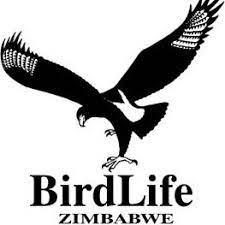CONSERVATION
Avitourism
OVERVIEW OF AVITOURISM
Avitourism is a niche tourism aspect pertaining to travel related to viewing birds in their natural environment. Despite being a very specific interest, birding is widely considered to be a fast-growing and widespread pastime.
A study in South Africa in 2010 estimated that up to R2.25 billion was contributed to the local economy through avitourism, and that avitourists were some of the widest travelling and longest staying visitors to South Africa. Avitourists are also generally wealthy and will spend money in areas away from traditional tourism hotspots in pursuit of special species, especially rural areas. Avitourism is made up of both organized tours and self-led itineraries, depending on the type of tourist and budget. Avitourism supports many associated tourism service providers, such as lodges, restaurants, nature reserves, and other attractions. Bird conservation stands to benefit through avitourism by creating economic value through birds. Avitourism can be leveraged for significant community benefit if implemented with that goal in mind.
BIRDING ROUTES
Birding routes are defined as a collection of avitourism attractions and service providers within an area that are designed into one geographically contained, cohesive, and traversable product. Proximate birding attractions can be used to synergistically market destinations to potential avitourists. Information attached to birding routes should include not only the special and attractive birds but also the various sites at which to observe them and the associated necessary service providers, such as accommodations, restaurants and other attractions. Birding routes can range from a small collection of sites in a limited area to much larger regional routes.
It is widely appreciated that tourism contributes significantly to the Gross Domestic Product of most developed countries. Post pandemic, the travel industry is already beginning to gain momentum, notwithstanding cost of living hikes. Globally, ecotourism travel is on the rise. In Africa, however, there is scarce appreciation of the difference of between tourism and ecotourism and its niche products. e.g. birdwatching tourism and of the financial and social opportunities that can be derived by developing this sector.
KAVANGO ZAMBEZI (KAZA) BIRDING ROUTE
BirdLife Zimbabwe is working with partners (NGOs, national tourism authority, Parks & Wildlife authority, Ministry of Environment, private sector tourism stakeholders) to develop the Great KAZA Birding Route spanning five countries: Angola, Botswana, Namibia, Zambia and Zimbabwe. The project will promote KAZA’s birding assets through the development and packaging of a Great KAZA Birding Route comprising routes and access information, birding sites, birder-friendly accommodation, and specialised guides for domestic, regional, and international birdwatchers as a means to diversify the KAZA’s tourism offerings, minimise the effects of seasonality, and reduce pressure on ‘honey pot’ areas by distributing tourists to lesser visited areas
The project outcome will be the addition of a key niche tourism product for the KAZA TFCA as a means of product diversification that will promote the protection of Key Biodiversity Areas (KBAs) and offer nature-based livelihood opportunities for communities in adjacent areas. With a value and livelihoods being attached to birds, there is a significantly greater chance that KBAs in KAZA, which host important bird populations, will be protected.
MBIRA HIKING/BIRDING TRAIL – CHIMANIMANI MOUNTAINS
In June 2022, the UNESCO Biosphere Reserve application for Chimanimani Key Biodiversity Area (KBA) was approved. As a key stakeholder, BirdLife Zimbabwe has been working with Chimanimani Tourist Association (CTA) to assist in the training of Mountain Guides to service the ecotourism industry. For this purpose, BLZ has been supporting the MTGs and the CTA in the development of the Mbira Hiking/Birding Trail – a new tourism product aimed at putting Chimanimani KBA back on the Zimbabwe and world tourism maps.


